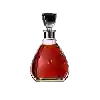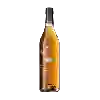
Winery l'EtoileBanyuls Extra Vieux Doux Naturel
This wine generally goes well with beef and mature and hard cheese.
Food and wine pairings with Banyuls Extra Vieux Doux Naturel
Pairings that work perfectly with Banyuls Extra Vieux Doux Naturel
Original food and wine pairings with Banyuls Extra Vieux Doux Naturel
The Banyuls Extra Vieux Doux Naturel of Winery l'Etoile matches generally quite well with dishes of beef or mature and hard cheese such as recipes of stewed beef heart or walnut and roquefort tart.
Details and technical informations about Winery l'Etoile's Banyuls Extra Vieux Doux Naturel.
Discover the grape variety: Ruby-cabernet
Intraspecific crossing carried out in 1936 by Doctor Harold Paul Olmo of the University of California in Davis (United States) between the carignan and the cabernet-sauvignon. The first plantings were made in 1948 in the United States (California). Today, it is less and less multiplied, but it can still be found in South Africa, Australia, Argentina, Chile, Uruguay, Yugoslavia, the United States, etc. In France, it is almost unknown.
Last vintages of this wine
The best vintages of Banyuls Extra Vieux Doux Naturel from Winery l'Etoile are 1996, 1994
Informations about the Winery l'Etoile
The Winery l'Etoile is one of of the world's greatest estates. It offers 47 wines for sale in the of Banyuls to come and discover on site or to buy online.
The wine region of Banyuls
Banyuls wines come from the South-eastern Part of Roussillon, in the south of France, in the lower Pyrenees, a few kilometres from the Spanish border. These naturally Sweet wines are consumed both as an aperitif and as a dessert. They come in a wide range of hues, from GoldenGreen (Banyuls Blanc) to Amber (Banyuls Ambré) to the intense garnet of the standard Banyuls Rouge. Unusually among the natural sweet wines of France, all Banyuls wines are made primarily from Grenache grapes of various colors.
The wine region of Languedoc-Roussillon
Languedoc (formerly Coteaux du Languedoc) is a key appellation used in the Languedoc-Roussillon wine region of southern France. It covers Dry table wines of all three colors (red, white and rosé) from the entire region, but leaves Sweet and Sparkling wines to other more specialized appellations. About 75% of all Languedoc wines are red, with the remaining 25% split roughly down the middle between whites and rosés. The appellation covers most of the Languedoc region and almost a third of all the vineyards in France.
The word of the wine: Cooked wine
In Provence, wine made from must cooked and reduced over a wood fire, traditionally consumed at Christmas time with the thirteen desserts.














